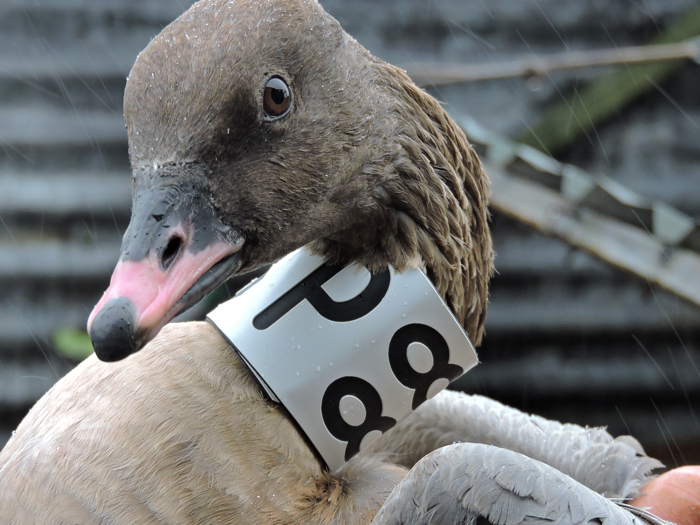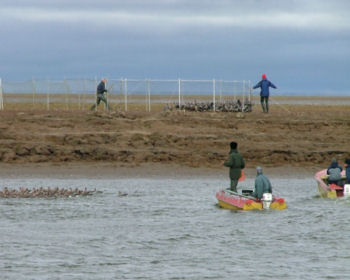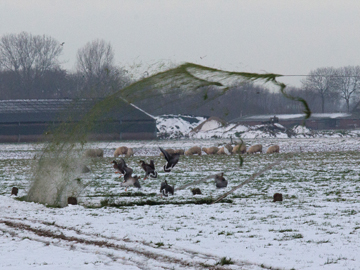Catching geese
The Dutch Research Institute Alterra co-operates since 1953 with the Dutch Union of Traditonial Goose-catchers to capture geese in winter for ringing purposes. For generations these skilled goose catchers lure wild geese to their clap-nets using well-trained live free-flying decoys. A truely traditional catching technique, that is now being used for scientific purposes. In addition geese are caught with cannon-nets in winter and spring. In the arctic moulting geese are easier to catch when they are flightless for several weeks. Then the geese can be herded like sheep into a funnel of standing nets. This, too is a traditional technique which was already fully used by the Russian Samoyeds in the 19th century. In those days just for food.
|
|
|
|
||
| Pink-footed Goose (photo: Gerard Müskens) | Catching moulting Greater White-fronted Geese in the Pyasina delta, July 2005 (photo: Sim Broekhuizen) | Catching Greater White-fronted Geese in the Province of Brabant, Netherlands, December 2014, using traditional clapnets (photo: Doortje Dallmeijer) |
Metal rings or engraved colour-rings?
Initially only metal rings were used in the Netherlands as issued by the Vogeltrekstation Arnhem. These only yielded recoveries if birds were shot or otherwise found dead and reported. Mainly by hunters some 10-15 % of the thus ringed geese were reported. Later, like the British Wildfowl and Wetlands Trust we started to use engraved colour-rings or even neck-collars to mark the geese. These could be identified by telescope in the field by persistent and dedicated observers. This resulted in an spectacular increase in the recovery rate. Over a period of 6 years recoveries of two groups of marked Russian Barnacle Geese were compared. At the time this species was already fully protected from hunting. Of those only marked with metal rings 96 % (924/966) of the geese were never reported. Of the other group marked with engraved colour-rings virtually all were were seen at least once by enthousiastic ring-readers (only 5 out of 576 birds were never reported (less than 1 %).
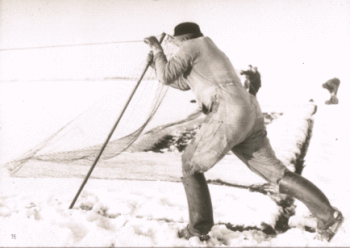 |
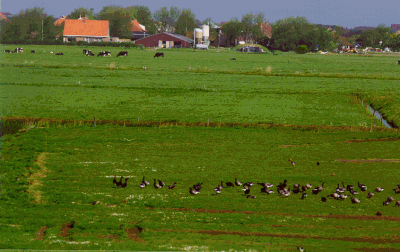 |
|
| The clap-net is being set again | Cannon-netting Brent Geese on Terschelling, NL (May 1999)(photo: Bart Ebbinge) |
